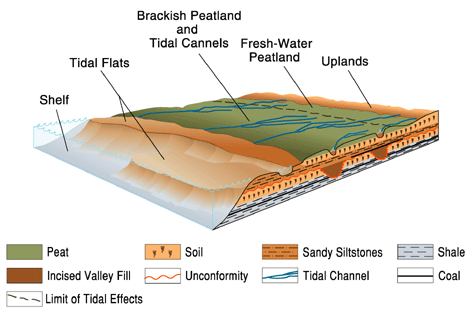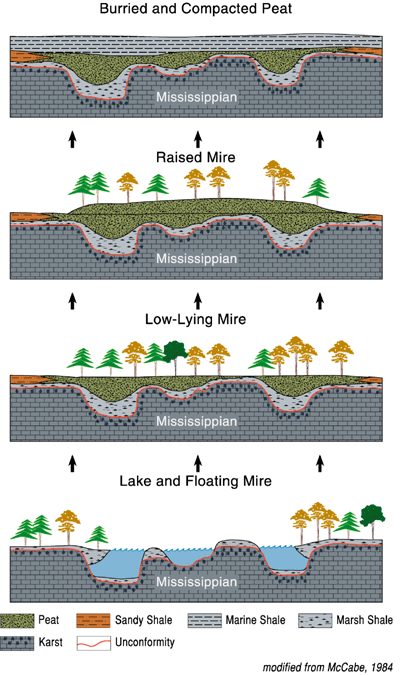 |
|
Kansas Geological Survey Open-file Report 2003-28 |
Depositional Models
Weir-Pittsburg Depositional Model

Peatlands in coastal plains develop above and behind open and back barrier shorelines, on estuaries, above infilled lagoons, and atop interfluves (Flores, 1993). Sustained growth and preservation of peat requires protection from marine influence. A gradual increase of base level will raise the water table aiding in the growth of mires. Continued transgression will eventually bury the peatland, protecting it from marine processes. Low-lying peatlands are prone to tidal effects and form brackish mires, while fresh water peatlands form in elevated areas and migrate across the low-lying mires to form protected raised mires (Flores, 1993).
Riverton Depostional Model
 |
The karst topography on top of the Mississippian limestones provided many low-lying areas where lakes and marshes developed. Low-lying mires formed across lows as the water table rose during a gradual transgression. Raised mires developed above the low-lying mires and sustained their own water table while building upward (McCabe, 1991). Margins of raised mires are typically steep and pinch out into marginal marine sediments. Continued transgression eventually buried and compacted the peat formed in the mires. As a result, Riverton coals will tend to thicken into Mississippian lows where peat developed from both raised and low-lying mires. |
|
|
e-mail : webadmin@kgs.ku.edu
Last updated May 2003
http://www.kgs.ku.edu/PRS/publication/2003/ofr2003-28/P3-04.html